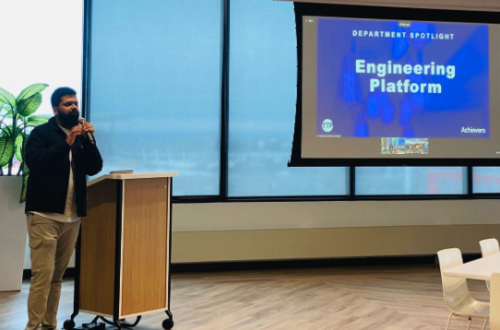When we think about building products, we often picture end users: customers, clients, and consumers. But what happens when your users sit just across the floor from you? What if your customers are internal teams, engineers, analysts, product managers relying on the platform you’re building to power their day-to-day work?
I faced this exact challenge in multiple organizations. As the platform team, we had created a robust data architecture: pipelines, export infrastructure, and analytics capabilities. The vision was clear teams across the organization could plug into our infrastructure, build their features faster, export standardized data for external partners, and create better dashboards for internal and external insights.
But building the platform was just half the battle.
The real challenge? Getting teams to use it.
Here’s how we approached platform adoption as a product problem and the playbook we developed to scale internal usage effectively.
1. Treat Documentation as a Product
Documentation is more than a checklist item – it’s your onboarding UI. If teams struggle to understand how to plug into your platform, it doesn’t matter how powerful it is.
- We created modular guides with real code snippets.
- Provided sample queries and “hello world” dashboards.
- Maintained a changelog and feature roadmap so teams knew what was new and what’s coming.
Pro tip: Treat your README like a landing page. Sell the benefits upfront.
2. Run Hands-on Enablement Sessions
PowerPoints are nice. Working sessions are better.
We hosted workshop-style sessions not just demos, but real-time onboarding where teams built their first integration right then and there.
- Quarterly hackathons with platform use-cases (e.g., “Build a dashboard in 1 hour using our pipeline”).
- Lunch & Learn series to showcase how other teams were using the platform.
These sessions helped break the inertia and surface blockers early.
3. Create a Leaderboard of Adoption
What gets measured gets incentivized.
We set up a leaderboard for teams that integrated first, built most widgets, or created the most dashboards. Some of the fun incentives:
- Shoutouts at Townhalls
- Internal blog features
- Priority support access
This turned adoption into a friendly competition and created internal champions who encouraged others to follow.
4. Provide White-Glove Support
Early adoption needs more than documentation. We offered:
- Migration office hours every week
- Slack channel with dedicated response times
- Embedded support from platform team members for high-impact launches
This support model allowed teams to feel confident, especially when moving legacy systems to the new architecture.
5. Build Feedback Loops Into the System
We treated feedback from internal teams the way product managers treat NPS or customer surveys.
- Added a “Was this useful?” prompt at the bottom of every doc.
- Ran monthly feedback sessions to understand what was working and what wasn’t.
- Used insights to prioritize our roadmap—what blockers to remove, what integrations to build next.
6. Showcase Success Stories
Nothing drives adoption like seeing what’s possible.
We spotlighted teams that had:
- Automated their data exports to partners
- Cut reporting time by 50%
- Integrated analytics widgets directly into their features
By publishing case studies internally, we created aspirational examples.
7. Make the Platform the Path of Least Resistance
Ultimately, the goal is for teams to default to the platform because it’s the easiest and most powerful way to build.
So we invested in:
- Auto-generated templates for common use cases (e.g., export schemas, dashboard views)
- SDKs and wrappers that let developers plug in with minimal effort
- Prebuilt analytics components that teams could embed instantly
Building for internal users is a unique blend of product thinking, change management, and evangelism. But done right, it creates a multiplier effect every feature team becomes faster, every product becomes more data-informed, and your company becomes more aligned.
Remember: internal adoption is not a one-time switch, it’s a long-term journey. And like any great product, it thrives when you focus on your users, even if they sit right next to you.




